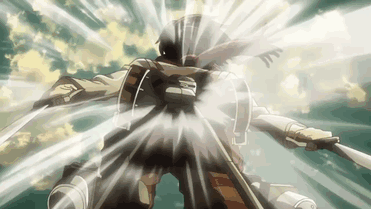Bernoulli's Principle can be used to explain the physics behind flying. Bernoulli's Principle is when a fluid, such as air or water, increases in speed and decreases in pressure. If airflow is faster over one side, such as a wing, then pressure difference occurs. Through this principle, planes and birds can produce aerodynamic lift from this pressure difference.
Although we know that we can not fly, this theme of flying is still a popular idea in entertainment, films, and literature. While it is great when films have accurate science behind it, it is not necessary to produce a great and enjoyable movie. For one, most of the general audience members are not experts in physics and films can easily embrace fantastical fictional ideas and notions, such as flying.
Firstly, one movie where flying physics is defied is in "Space Jam" (1996). In this film, Tweety is a bird with a very large head and feet with a tiny body and wings.
Tweety flies at 0:25 and 0:30 in the clip below.
From what we know about birds and humans and why and why they can not fly, Tweety should not be able to fly at all. His wingspan is far too small and cannot support his body size. His tiny wingspan and subsequent strength would not be able to produce the aerodynamic lift and pressure difference to allow him to fly.
But because the audience can tell that Tweety is a bird and also in a fictional world, these broken laws of physics can be pushed aside. It would be very strange if Bugs Bunny was flying despite being in this same fictional world, but because Tweety is obviously a bird, we can easily associate him with flying despite having incorrect body ratios.
Secondly, strange flying is also present in "Hero" (2002), a Chinese wuxia film. A wuxia film has elements of martial arts, sorcery, and chivalry.
The characters appear to fly gracefully in the air with no push off (0:52), even changing their direction of flight in mid-air at 1:13. At 1:32, the woman causes a whirlwind by unsheathing her sword, but this small force does not cause enough pressure and lift to cause a whirlwind of fallen leaves.
In most wuxia films, this strange flying is often present and often times can be seen as quite comical. But there is an entire genre of literature and films based on this theme of martial arts, sorcery, and chivalry, so this notion of strange flying and other impossible martial arts stunts are widely accepted.
Another animated film that shows improper flying is "Howl's Moving Castle" (2004) by Studio Ghibli.
From 5:10 to 5:40, Howl, while carrying Sophie, flies straight up after hitting a dead end in an alley. Howl and Sophie are too heavy to be able to produce aerodynamic lift. They float in the air and are able to "walk" in the sky but these movements would not be possible or helpful in maintaining pressure difference. Despite this scene being obviously impossible, the scene still evokes feelings of wonder and beauty.
Also, at 1:11:14, while Sophie is falling from the sky, she is sucked into the open doorway which seems to have its own gravitational force. This flying produces a strange arc.
These flying sequences do not make any sense, but the movie is fantastic and highly esteemed. Bad physics does not make a bad film.
Lastly, another Japanese animation that has ridiculous flying sequences is from a series called "Attack on Titan" (2013).
While they are not directly flying, they use a machine to help them travel quickly in the air. In this anime, the characters use "Three Dimensional Maneuver Gear" to allow humans greater mobility in killing human-eating naked giants. The gear includes grappling hooks shot by a gun and compressed gas tanks attached to their body.
Check out the first 45 seconds in the video below to see this gear in action.
The sudden acceleration the characters experience while using the 3D Maneuver gear would break their necks. This is similar to how Spiderman accidentally snapped Gwen Stacy's neck when he abruptly ends her fall. The characters should also have serious injuries when they land because of their speed and abrupt stops, but the characters only have minor injuries and are able to keep going unless they get attacked by the giants.
Putting the impossible physics part in this anime aside... the awesome animation and cool factor makes up for it.
The plot of this series might sound a bit strange, but this series did very well in Japan and internationally and has spawned multiple games, events, and even an upcoming live action film. Even if the physics does not make sense, it was still very well received nationally and internationally.
In conclusion, the theme of flying in entertainment and literature has always been an exciting experience for mankind. We will never be able to fly by our own means, so we create fascinating worlds where we are able to fly. In the examples shown above, the movement of flying does not necessarily adhere to the laws of physics and might even kill you, but the way the movement of flying is presented is alluring and fascinating and only possible through films and animation.
Thus, physics in animation and film does not need to be entirely accurate, but as long as they provoke the desired emotion and experience, it is successful. In the end, as long as the audience enjoys the experience in the world presented, the physics of flying can be accepted.



No comments:
Post a Comment